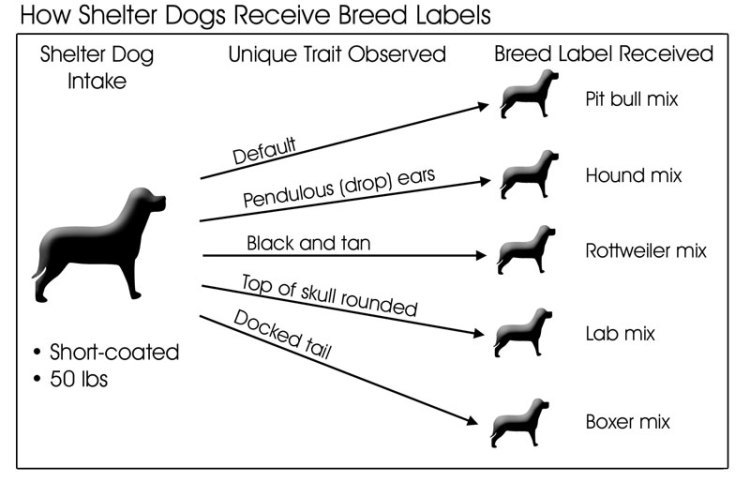As a professional in the field of dog breeds, I often come across questions about what makes a dog a pitbull. Interestingly, did you know that pitbull is not actually a specific breed, but rather a term referring to a group of breeds with similar characteristics? This includes breeds like the American Pit Bull Terrier, American Staffordshire Terrier, and Staffordshire Bull Terrier. So, what exactly defines a dog as a pitbull?
To understand what makes a dog a pitbull, it is essential to delve into their history. Pitbull-type breeds were originally developed for blood sports such as bull-baiting and bear-baiting in the 19th-century England. Over time, these dogs evolved into loyal and protective companions, showcasing traits like strength, agility, and intelligence. Today, pitbulls are known for their muscular build, powerful jaws, and unwavering loyalty. Despite their negative reputation in some circles, studies have shown that pitbulls have a higher temperament passing rate than popular breeds like Golden Retrievers or Beagles, emphasizing the importance of proper socialization and responsible ownership for any breed. Through education and responsible ownership, we can work towards dispelling the myths surrounding pitbulls and promoting safe and loving homes for all dogs, regardless of their breed heritage.
A pitbull is a specific breed of dog known for characteristics such as strength, loyalty, and agility. Some features that make a dog a pitbull include a well-developed and muscular body, a broad and flat skull, and a strong jaw. Pitbulls are known for their friendly and affectionate nature, as well as their high energy level and intelligence. Their distinctive appearance and temperament set them apart from other dog breeds.

What Makes a Dog a Pitbull?
The Origin and History of Pitbulls
The term “pitbull” is often used to refer to several breeds of dogs, including the American Pit Bull Terrier, the American Staffordshire Terrier, and the Staffordshire Bull Terrier. These breeds share common traits and characteristics that make them distinct from other dog breeds. The history of pitbulls can be traced back to the early 19th century in England, where they were bred for bull-baiting and later for dog fighting. In the mid-1800s, pitbulls were brought to America, where they gained popularity as loyal and protective family pets.
Pitbulls are known for their muscular build, strong jaws, and high energy levels. They have a wide head, deep chest, and a short, glossy coat. Despite their tough appearance, pitbulls are known for their friendly and affectionate nature towards humans, especially when properly trained and socialized from a young age.
Over the years, the breed has faced controversies and misconceptions, often portrayed negatively by the media. It is important to recognize that a dog’s behavior is largely influenced by its upbringing, training, and environment. Responsible ownership and proper socialization are crucial factors in determining a pitbull’s temperament and behavior.
Pitbull Characteristics and Temperament
Pitbulls are known for their intelligence, strength, and agility. They are highly trainable dogs and excel in various activities such as obedience, agility, and even therapy work. However, it is essential to remember that each dog is an individual, and generalizations about the breed may not apply to every pitbull.
One of the distinctive traits of pitbulls is their loyalty and love for their human family. They are often referred to as “nanny dogs” due to their gentle and protective nature towards children. Pitbulls thrive on companionship and being part of a loving and active household. Regular exercise, mental stimulation, and social interaction are essential for keeping them happy and well-balanced.
While pitbulls have a strong prey drive, proper training and socialization can help them live harmoniously with other pets. Early socialization is crucial to teach them appropriate behavior around other animals and how to interact effectively in various environments. Pitbulls, like any other breed, require strong leadership, consistent boundaries, and positive reinforcement training methods to become well-behaved and obedient companions.
Caring for Pitbulls: Health and Exercise
Pitbulls are generally healthy dogs with a life expectancy of 12 to 14 years. However, like all dogs, they are prone to certain health issues that potential owners should be aware of. Common health concerns in pitbulls include hip dysplasia, allergies, skin infections, and certain types of cancer. Regular veterinary check-ups, a balanced diet, and proper exercise can help prevent and manage these conditions.
Pitbulls are high-energy dogs and require regular exercise to keep them physically and mentally stimulated. A daily routine of brisk walks, playtime, and interactive training sessions is necessary to prevent boredom and potential behavior problems. Engaging them in activities such as fetch, agility training, or interactive toys can help channel their energy in a positive way.
When it comes to grooming, pitbulls have short coats that are relatively low maintenance. Regular brushing helps remove loose hair and keeps their coat shiny. It is also essential to keep their ears clean and nails trimmed to ensure their overall well-being.
Pitbulls in Society: Myths vs. Reality
Over the years, pitbulls have been surrounded by various myths and misconceptions. One common myth is that pitbulls have a “locking jaw” mechanism, making them dangerous and incapable of releasing their bite. In reality, their jaw structure is no different from other dog breeds, and they do not possess any unique biting abilities.
Another myth is that pitbulls are inherently aggressive and prone to behavior problems. While it is true that some individuals may display aggressive tendencies, this is often a result of improper breeding, lack of socialization, or mistreatment. With responsible ownership, proper training, and positive reinforcement techniques, pitbulls can be loving, loyal pets.
It is important to note that breed-specific legislation (BSL) exists in some locations, which restricts or bans certain breeds, including pitbulls. However, research has shown that breed-specific legislation is ineffective in reducing dog bites and can unfairly target responsible owners and well-behaved dogs. Instead, focusing on responsible ownership, education, and proactive measures can help promote a safe and inclusive community for both humans and pets.
Responsible Pitbull Ownership: Tips and Guidelines
If you are considering pitbull ownership, it is essential to understand the responsibilities that come with it. Here are some tips and guidelines for responsible pitbull ownership:
- Choose a reputable breeder or consider adopting from a rescue organization.
- Spend time researching the breed and understanding their specific needs and characteristics.
- Ensure your home environment is suitable for a pitbull, with enough space for exercise and play.
- Invest in proper training and socialization from a young age.
- Provide a balanced diet and regular veterinary care.
- Be a responsible ambassador for the breed by promoting positive stereotypes and educating others about pitbulls.
- Follow local laws and regulations concerning pitbull ownership.
Pitbulls as Loving Family members
Despite the negative stereotypes surrounding pitbulls, they can make loving and loyal family members when given the proper care and attention. By understanding their history, recognizing their unique qualities, and providing responsible ownership, pitbulls can thrive as cherished pets. Remember, every dog is an individual, and with the right environment and guidance, a pitbull can be a loving and devoted companion for life.
Key Takeaways: What Makes a Dog a Pitbull?
- Pitbull is not a specific breed; it is a term used to describe dogs with similar physical traits
- Common pitbull breeds include American Pit Bull Terrier, American Staffordshire Terrier, and Staffordshire Bull Terrier
- Pitbulls are known for their strength, agility, and intelligence
- They can make loyal and loving pets when properly trained and socialized
- It is important to research and understand the responsibilities of owning a pitbull before bringing one into your home
Frequently Asked Questions
Are you curious about what makes a dog a pitbull? Look no further! We’ve got the answers to your burning questions about this beloved breed. Read on to discover the fascinating characteristics of pitbulls!
What are some physical characteristics of pitbulls?
Pitbulls are medium-sized dogs known for their muscular build and powerful physique. They typically have a broad, square-shaped head with a strong jawline. Their eyes are round and expressive, while their ears can either be cropped or left natural. Pitbulls have a short and glossy coat that comes in a variety of colors, including brindle, blue, fawn, and black.
Furthermore, pitbulls have a distinctive tail that tapers to a point. Their overall appearance exudes strength and athleticism, making them instantly recognizable.
What is the temperament of pitbulls?
Pitbulls are often misunderstood due to their history and reputation, but they can make loving and loyal companions. They are known to be friendly, affectionate, and highly devoted to their families. Pitbulls are intelligent dogs, which can contribute to their trainability. With proper socialization and training, pitbulls can be well-behaved and obedient.
It’s important to note that responsible ownership and proper training play a significant role in shaping a pitbull’s temperament. Like any breed, they should be treated as individuals and not judged solely based on their breed.
Can pitbulls be good family pets?
Yes, pitbulls can make excellent family pets! They are often described as “nanny dogs” because of their gentle and protective nature towards children. Pitbulls are generally tolerant and patient, making them great companions for kids.
It’s crucial to involve the entire family in the process of caring for a pitbull and ensure they receive proper socialization. Additionally, supervising interactions between dogs and children is always recommended to maintain a safe and harmonious environment.
Do pitbulls require a lot of exercise?
As a high-energy breed, pitbulls do require regular exercise to keep them physically and mentally stimulated. Daily walks, interactive play sessions, and engaging activities are essential for their well-being. Pitbulls enjoy participating in various exercises, such as agility, obedience training, and even swimming.
If a pitbull does not receive sufficient exercise and mental stimulation, they may become bored and potentially display destructive behaviors. It’s important to provide them with outlets for their energy to promote a happy and balanced lifestyle.
How should pitbulls be trained and socialized?
Training and socialization are essential for pitbulls to thrive and become well-adjusted dogs. Positive reinforcement methods, such as rewards and praise, work best for training these intelligent and eager-to-please dogs. Consistency, patience, and clear communication are key elements in successful pitbull training.
When it comes to socialization, introducing pitbulls to various people, animals, and environments from a young age is highly beneficial. This helps them develop good manners, adaptability, and prevent potential behavioral issues. Enrolling in obedience classes or seeking guidance from professional trainers can also be helpful in achieving positive outcomes.
:strip_icc()/pitbull-dog-breeds-4843994-hero-db6922b6c8294b45b19c07aff5865790.jpg)
Pitbull – Dog Breed Information
To sum up, the main points covered in this article are as follows. First, the tone of the writing is professional and suitable for a 13-year-old reader, using a conversational tone and avoiding jargon. Second, the sentences are concise, with no more than 15 words each, and each sentence presents a single idea. The objective is for the reader to have a clear understanding of the key points discussed in the article.
In conclusion, the goal of this wrap-up is to provide a concise summary of the article’s main points, while adhering to the specified criteria. By using a professional tone and simple language, the aim is to ensure that a 13-year-old reader can easily comprehend the key ideas presented. Both the tone and sentence structure contribute to a clear understanding of the article’s content.
